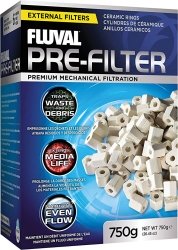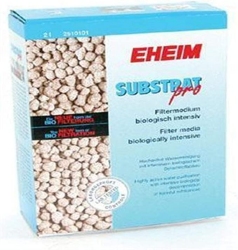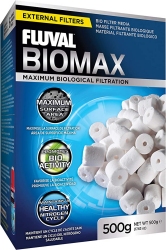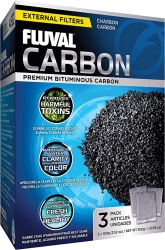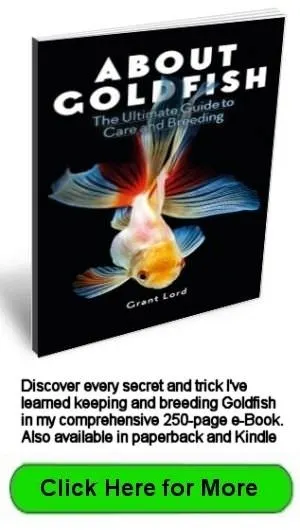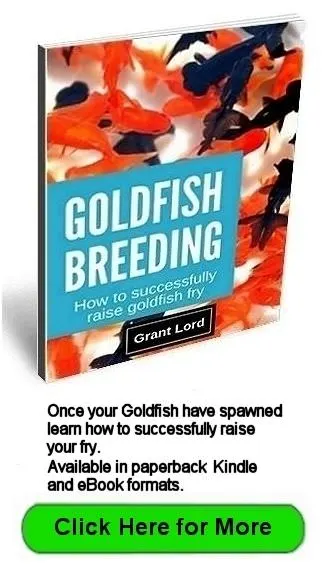- Home
- Aquarium Filters
- Aquarium Filter Media
Aquarium Filter Media
The purpose of aquarium filter media is to provide a surface for beneficial aerobic bacteria to cling to. Aerobic bacteria are always present in established aquariums but only in small quantities.
A filter provides an ideal environment for large numbers of bacteria to grow in. It is dark with a high water flow bringing waste material to the bacteria colony. Once established in sufficient quantities the bacteria will process large amounts of waste material into harmless compounds.
Aquarium Filter Media Types
The filter media discussed here is for external canister type filters. This type of filter has the greatest flexibility when choosing what media you want to use. This is why most canister filters come without filter media except possibly an open-cell foam pad.
Smaller, cheaper filters such as internal corner filters usually come with open-cell foam media. This is quite acceptable but because of the much lower water flows through these types of filters, they are best suited to smaller aquariums.
Canister filters usually have three media trays. For most goldfish aquariums, the best arrangement of media is a large size in the bottom, medium-size media in the middle, and an open-cell foam pad in the top tray.
I am assuming that your filter flow is bottom up as is the case for most canister filters.
This arrangement slows the water flow down as it passes the bacteria clinging to the filter media giving them more time to process the waste.
Notice I haven’t discussed anything about filter media being used to filter the water.
Its primary purpose is to increase the surface area within the filter so increasing the number of bacteria that can colonize it.
The filter media does provide limited filtering of the water, which is why you place the larger media in the bottom of your filter, and the foam pad at the top. This arrangement stops larger particles that are sucked into the filter from quickly clogging the pad.
On some filters, as the foam pad gets clogged, it can dislodge, float to the top of the filter and clog the outlet. If this becomes a problem, discard the foam pad and fill the top tray with medium filter media.
Large Filter Media (pre-filter) Options
Large filter media, sometimes called pre-filter media, is usually made up of hard ceramic shapes about ½” long by ½” (12mm) round or hexagon with a hole through the center. It is placed in the bottom tray of your filter.
Some media are quite smooth such as the Fluval media shown above; others come with a slightly rough surface. Bio balls are also available but are quite large with little surface area for bacteria to cling to. I’m not a fan of these.
The primary job of the pre filter media is to spread the water flow across the filter thereby slowing it down while providing some surface area for bacteria to cling to.
Medium Filter Media
Medium filter media is placed in the middle tray of your filter. It usually comes in the form of hard round or irregularly shaped balls about ¼” in diameter. The surface is usually quite rough.
If you have a frequent clogging problem, you can use media such as Fluval Biomax rings that look similar to the pre-filter media but are smaller with a rough surface. These give superior water flow because they don’t compact as the round balls do.
Open Cell Foam Pad
Most canister filters come with a foam pad that is placed in the top tray of the filter. If it doesn’t come with one, I just fill the tray with more medium filter media.
Once you have your media in your filter, check the water flow rate. This is the best flow the filter will achieve, because once installed the efficiency will drop as it starts clogging.
Activated Charcoal
Charcoal is used in many industries to absorb chemicals from air and fluids. Charcoal is often added to aquarium filters as a water polisher.
Charcoal can improve the color, clarity and smell of aquarium water. It will also remove heavy metals.
Charcoal is usually supplied in convenient nylon bags that you place in the filter. These bags can be suspended in the aquarium, but their absorption efficiency is low because the water flow past them isn't as high as in a filter.
Charcoal should not be used if medication has been added to aquarium water as it will absorb it.
Charcoal has a limited lifespan. It should be replaced regularly.
Tip
Activated charcoal should be placed at the end of your filter's water flow just before it re-enters the aquarium so that the cleanest water is flowing past it. This will extend the effective life of your charcoal.
You may have to mix and match different media to find your ideal combination, but the options given here will suit most applications as long as the filter is big enough for the job.
Aquarium filter media can also be used in pond filters, you just need a lot more of it.
Most companies that supply filter media, excluding carbon, suggest replacing it periodically. I have never needed to replace filter media.
It needs a good rinse in aged water at every filter service, but there is no reason why it would need replacing.
If you need to buy some aquarium filter media Amazon.comTop of Aquarium Filter Media page
